
How to Use SSR-10A: Examples, Pinouts, and Specs
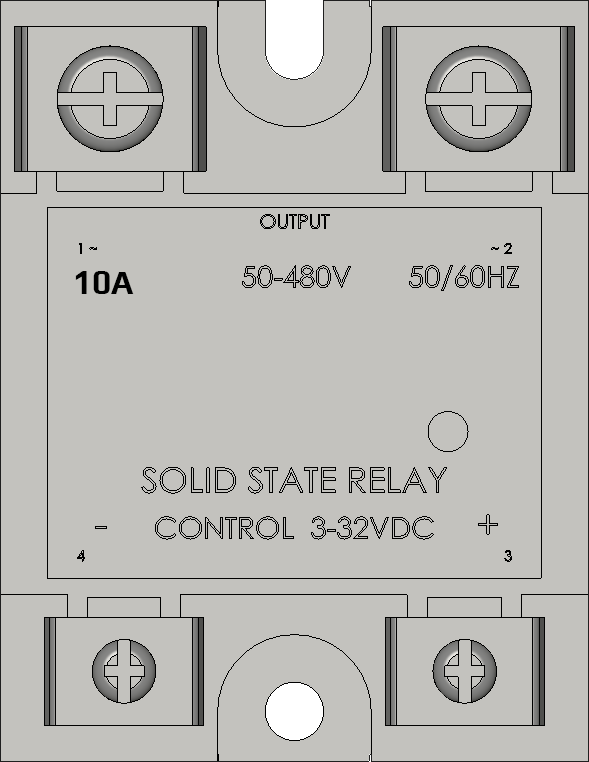
 Design with SSR-10A in Cirkit Designer
Design with SSR-10A in Cirkit DesignerIntroduction
The SSR-10A is a Solid State Relay (SSR) designed for high-speed, silent switching of AC loads without the mechanical wear and tear associated with traditional electromechanical relays. It is ideal for a wide range of applications including industrial automation, home automation, and temperature control systems.
Explore Projects Built with SSR-10A
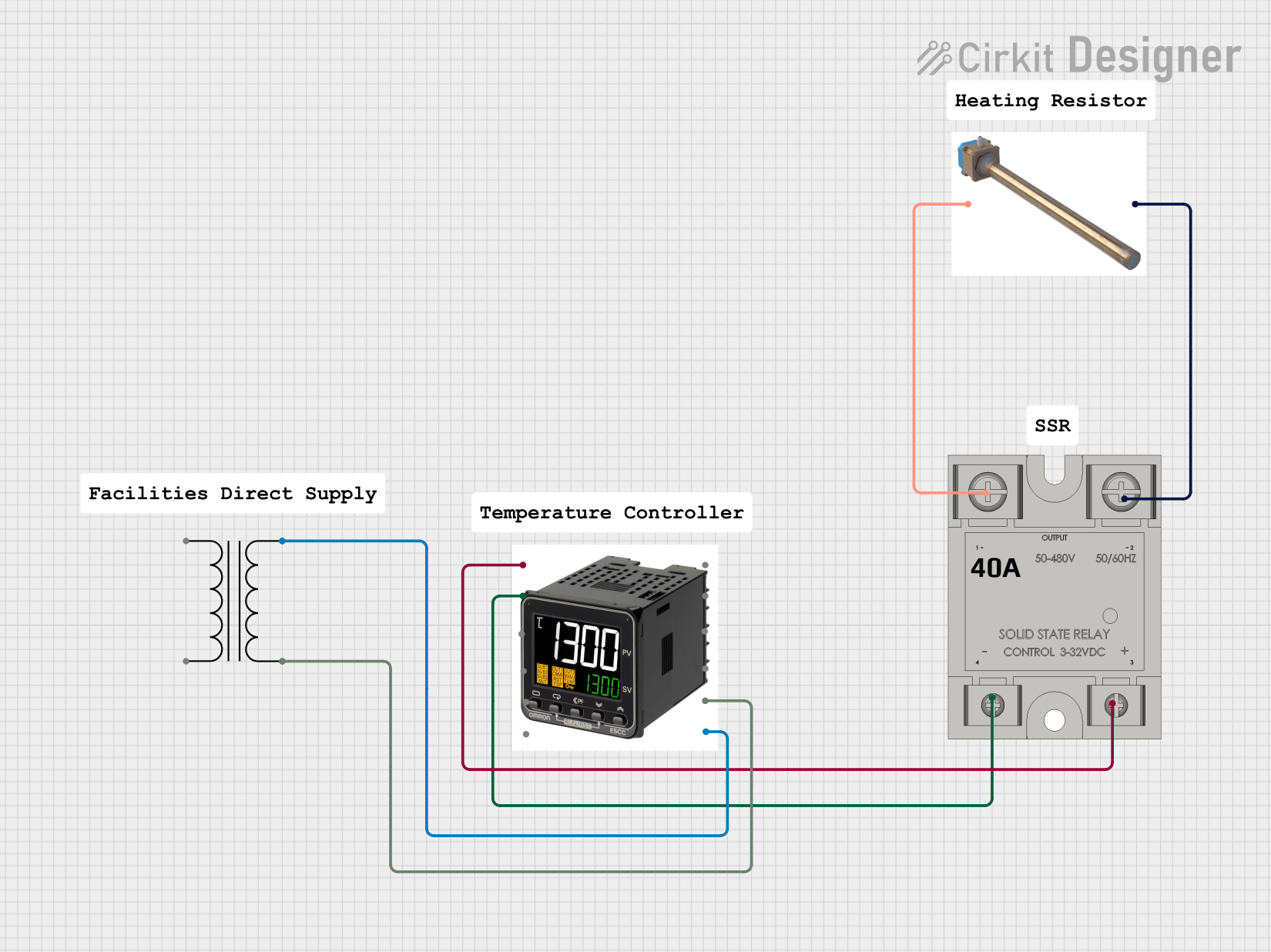
 Open Project in Cirkit Designer
Open Project in Cirkit Designer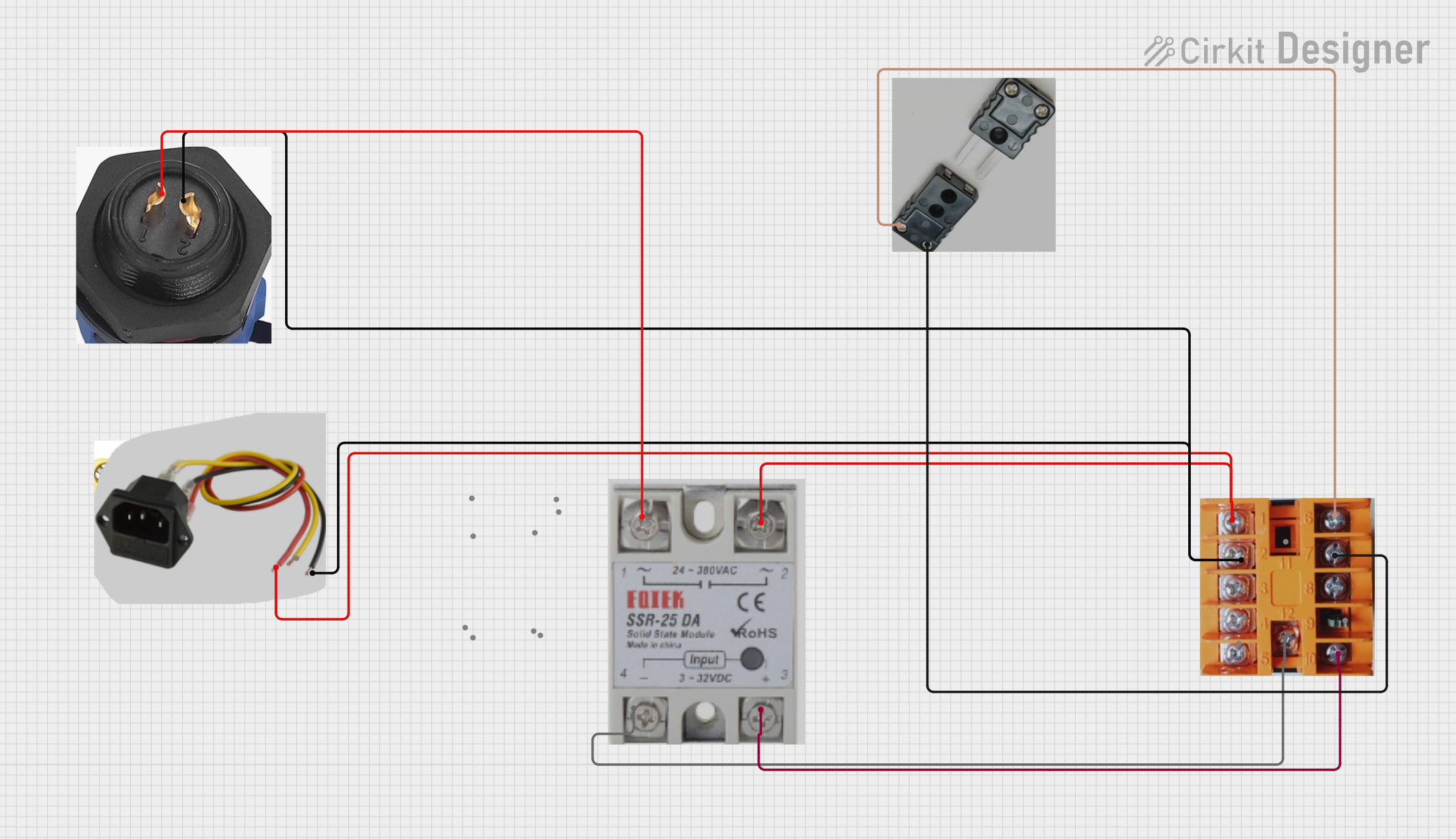
 Open Project in Cirkit Designer
Open Project in Cirkit Designer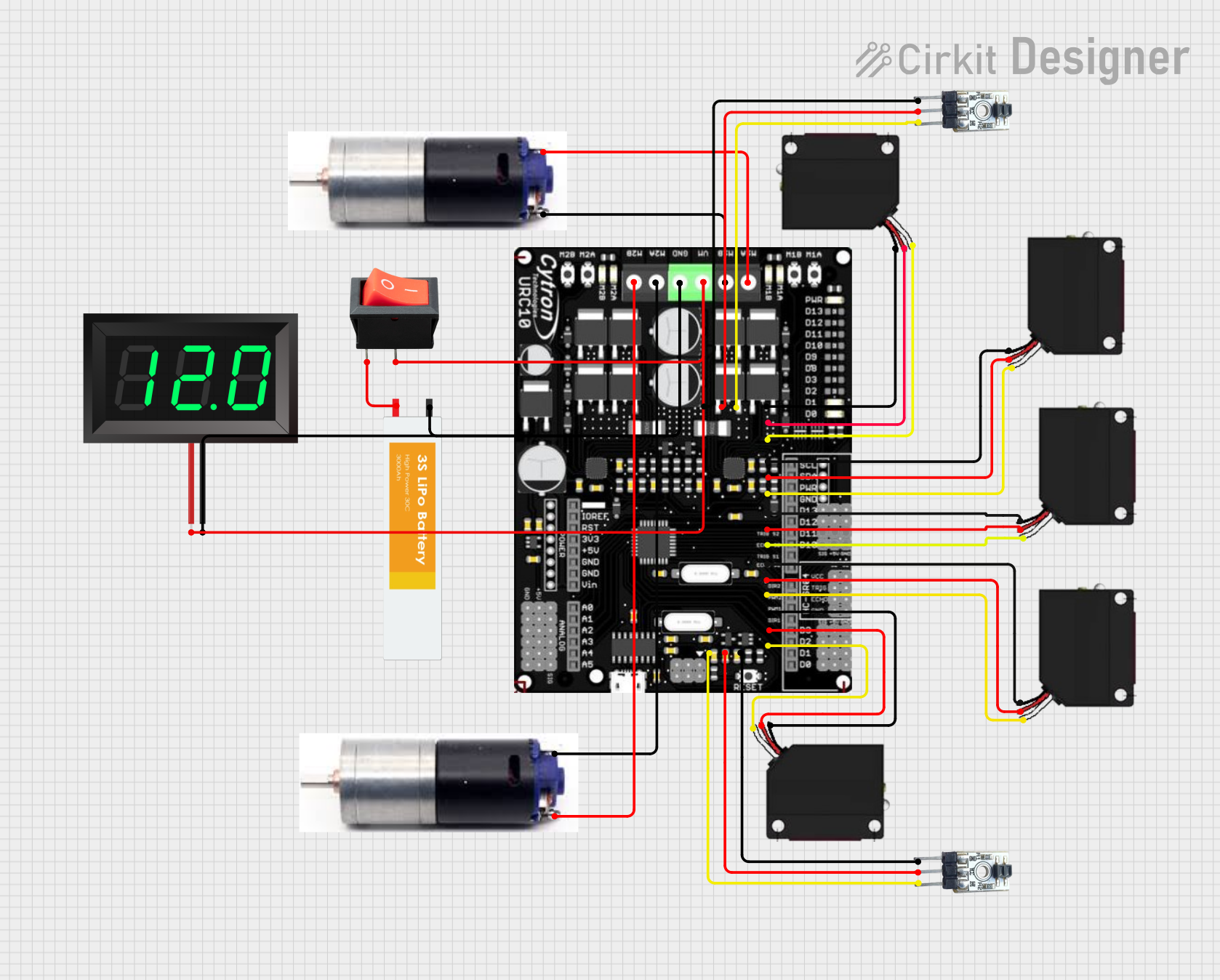
 Open Project in Cirkit Designer
Open Project in Cirkit Designer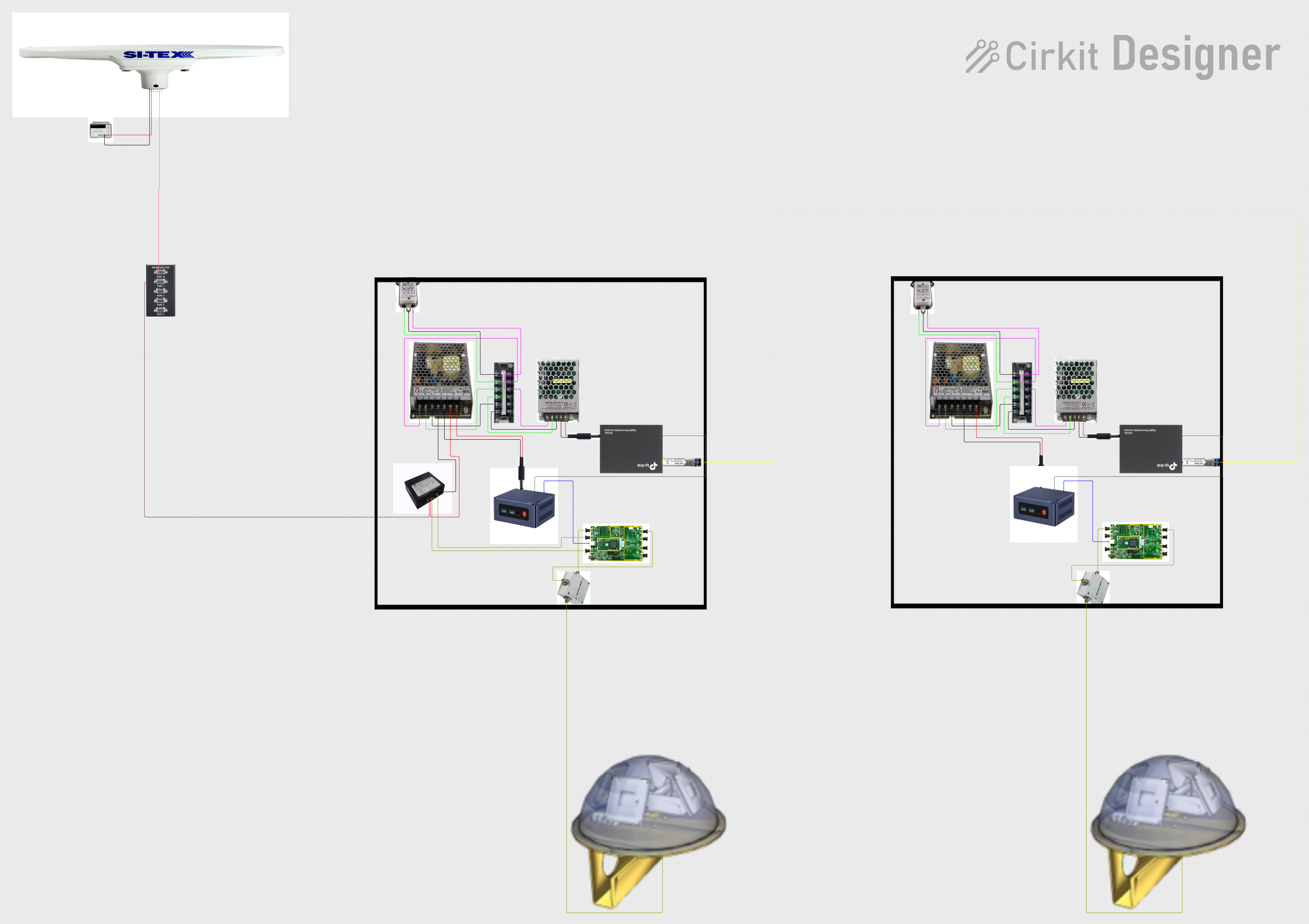
 Open Project in Cirkit Designer
Open Project in Cirkit DesignerExplore Projects Built with SSR-10A

 Open Project in Cirkit Designer
Open Project in Cirkit Designer
 Open Project in Cirkit Designer
Open Project in Cirkit Designer
 Open Project in Cirkit Designer
Open Project in Cirkit Designer
 Open Project in Cirkit Designer
Open Project in Cirkit DesignerCommon Applications and Use Cases
- Controlling high-power devices such as heaters, motors, and lights.
- PID temperature control in soldering stations, ovens, and incubators.
- Home automation for controlling appliances remotely.
- Switching of resistive and inductive loads in industrial automation.
Technical Specifications
Key Technical Details
- Control Voltage Range: 3-32V DC
- Load Voltage Range: 24-380V AC
- Maximum Current Rating: 10A
- Isolation: Opto-isolation between input and output
- Zero Cross: Yes, for reduced electrical noise
- Response Time: Fast on/off time, typically less than 10ms
Pin Configuration and Descriptions
| Pin Number | Description | Notes |
|---|---|---|
| 1 | Control Voltage (+) | Connect to DC+ (3-32V) |
| 2 | Control Voltage (-) | Connect to DC- |
| 3 | Load Voltage (AC) | Connect to one side of the AC load |
| 4 | Load Voltage (AC) | Connect to the other side of the AC load |
Usage Instructions
How to Use the SSR-10A in a Circuit
Control Side Connection:
- Connect the positive terminal of the DC control signal to pin 1.
- Connect the negative terminal of the DC control signal to pin 2.
Load Side Connection:
- Connect one terminal of the AC load to pin 3.
- Connect the other terminal of the AC load to pin 4.
Powering the SSR:
- Apply a DC voltage within the specified range (3-32V DC) to the control side to switch the relay on.
- Remove the control voltage to switch the relay off.
Important Considerations and Best Practices
- Ensure the load does not exceed the maximum current rating of 10A.
- Use proper heat sinking if the relay is to be used near its maximum rating.
- Consider using a snubber circuit for inductive loads to protect against voltage spikes.
- Always ensure proper isolation between the control and load circuits for safety.
Troubleshooting and FAQs
Common Issues Users Might Face
- SSR does not switch on: Check if the control voltage is within the specified range and properly connected.
- SSR overheats: Ensure the current through the SSR does not exceed 10A and that adequate heat sinking is in place.
- Load does not turn off: Verify that the control voltage is completely removed and that there are no shorts on the load side.
Solutions and Tips for Troubleshooting
- Double-check wiring connections according to the pin configuration.
- Measure the control voltage to ensure it falls within the specified range.
- For inductive loads, consider using a snubber circuit to manage voltage spikes.
FAQs
Q: Can the SSR-10A be used to switch DC loads? A: No, the SSR-10A is designed for AC loads only.
Q: Is there a need for a heatsink? A: For continuous operation near the 10A limit, a heatsink is recommended to dissipate heat.
Q: How do I know if the SSR is on? A: Some SSRs have an LED indicator. If not, measuring the voltage across the load terminals when the control voltage is applied can confirm operation.
Example Code for Arduino UNO
// Example code to control an SSR-10A with an Arduino UNO
const int ssrPin = 7; // Connect the control voltage (+) to Digital Pin 7
void setup() {
pinMode(ssrPin, OUTPUT); // Set the SSR pin as an output
}
void loop() {
digitalWrite(ssrPin, HIGH); // Turn on the SSR (apply control voltage)
delay(5000); // Keep the SSR on for 5 seconds
digitalWrite(ssrPin, LOW); // Turn off the SSR (remove control voltage)
delay(5000); // Keep the SSR off for 5 seconds
}
Note: Ensure that the control voltage from the Arduino matches the SSR's requirements. Use a suitable driver if necessary.